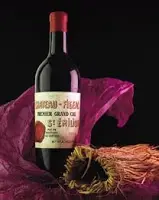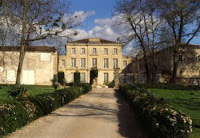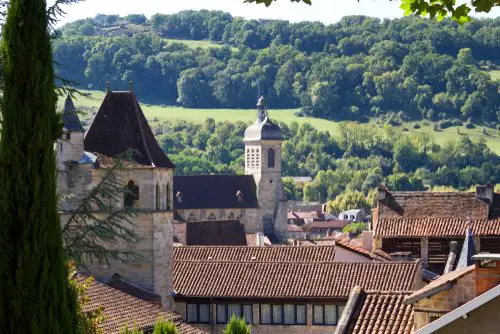 With the sad news of Thierry Manoncourt’s passing away last week I thought there could be no more a fitting tribute than to write about his château and the great wines he produced.
With the sad news of Thierry Manoncourt’s passing away last week I thought there could be no more a fitting tribute than to write about his château and the great wines he produced.
Thierry Manoncourt took over the Saint Emilion First Growth Chateau Figeac in 1947 with his wife, Marie-France Duboys de Labarre.
Figeac had been deserted by its owners in the previous century, although its wine never lost its reputation as one of the finest in Bordeaux. Prior to 1892 Figeac had been sold five times over the previous 50 years,
preventing any sustained commercial policy with the Bordeaux wine merchants. However, with the arrival of the Manoncourts, and thanks to Thierry Manoncourt’s experience as an agricultural engineer, the wine reached new heights.
Figeac is the largest estate in Saint Emilion and covers 100 acres however in
times past it was much larger. Figeac is also one of the oldest Bordeaux estates and the first known historical reference to the Figeac estate dates back to the 2nd century AD, when extensive lands and a large Gallo-Roman villa were known to bear the name of their owner, the Roman pro-Consul Figeacus.
The name of the estate and that of the town of Figeac (in the Lot) would appear to have the same origin.
The water system dates back to the Gallo Roman period and the Château has  remains of Medieval defensive walls and buildings as well as the ruins of a Renaissance Château incorporated into its structure.
remains of Medieval defensive walls and buildings as well as the ruins of a Renaissance Château incorporated into its structure.
Figeac belonged to the same family for more than 500 years but down the centuries it has been sold a number of times and plots of its vines have gone to other Château which explains the number of them which have added Figeac to their own name.
In the early 19th century the owner of Figeac, the widowed Countess de Carle-Trajet, was obliged to sell off several portions of the estate.
The Countess sold plots at Beauregard and La Conseillante, and part of the Petit Figeac tenant farm. In 1832, Monsieur Ducasse purchased 16 acres from her, comprising a house, a barn, and the Cheval Blanc tenant farm. The heart of the estate was sold in 1892 to the present family.
In 1950 Thierry Manoncourt began bottling samples of the different varieties from various parts of the estate to study the influence of each of the grape varieties after a normal ageing period of about ten years.
varieties from various parts of the estate to study the influence of each of the grape varieties after a normal ageing period of about ten years.
This procedure made it possible to follow the development of wines made from individual grape varieties over a period of 40 years
. Thierry Manoncourt has therefore been at the forefront of a type of research that is still quite rare in the Bordeaux region. In the light of the data provided by this procedure, 30 % of the Figeac vineyard is planted with Merlot and 70% with Cabernets, half Cabernet Franc, half Cabernet Sauvignon.
The Cabernets are better suited to the soil that the vineyards lie on which is a deep, Médoc-like gravel topsoil over a flinty, iron rich subsoil – this terroir is often referred to as “Graves de Saint Emilion”.
Cabernets are better suited to the soil that the vineyards lie on which is a deep, Médoc-like gravel topsoil over a flinty, iron rich subsoil – this terroir is often referred to as “Graves de Saint Emilion”.
Figeac has the highest proportion of Cabernet – and especially Cabernet Sauvignon – of any wine in the Saint Emilion appellation. Because of this Château Figeac is known as the “most Médoc of Saint Emilions”.
However, it can he enjoyed even when relatively young thanks to the excellent quality of the Merlot. Nevertheless, the high percentage of Cabernet grapes, with strong ageing potential, means that this great wine also lives up to collectors’ expectations.
In 1971 Thierry Manoncourt had an immense winery built in cut stone and excavated new cellars to a depth of over 6 metres. At the time, the press called him the “Pharaoh of Saint Emilion”
. Besides using traditional wood and stone building materials, he innovated by introducing the colour blue into the cellars and installing glass doors. After Haut Brion and Latour, Figeac was the third estate to use stainless steel vats in Bordeaux.
Thierry Manoncourt gradually re-established the wines of Figeac and their great reputation since the 1950s, not only because of renewed relations with wine brokers, but also thanks to new ways of communicating.
These involve information about the estate and its wine, accessible to all.
He was one of the first château owners in Bordeaux to open his cellars not only to wine professionals, but also to wine lovers.
This was an important factor in the way new buildings were designed, in the way the cellars were lit, and the use of glass or wrought iron doors instead of traditional wooden doors to let visitors have a look.
Furthermore, Figeac offers a free tasting to all visitors. Although this sort of welcome is now widespread, and contributes to regional tourist development,
there are very few estates which offer visitors tastings of vintages nearly 10 years old in order to show them the qualities of a fine, aged wine
. Wine lovers have much to thank Thierry Manoncourt for and he will be much missed.

